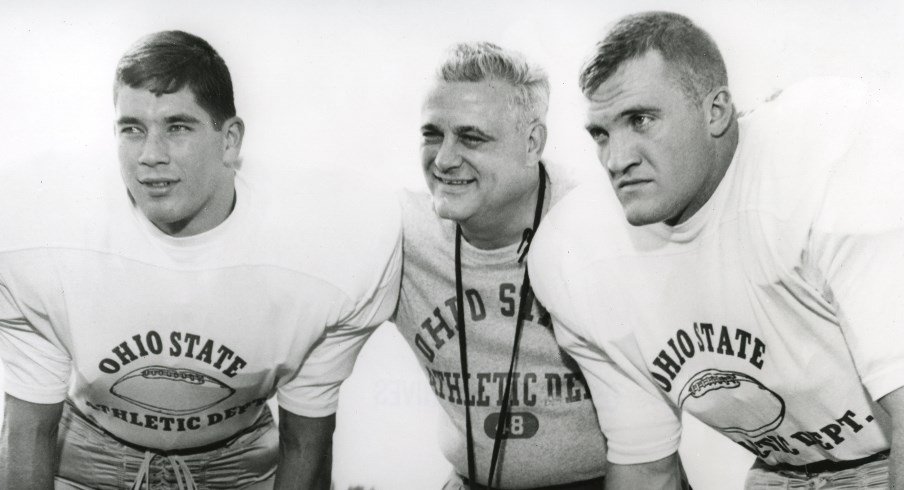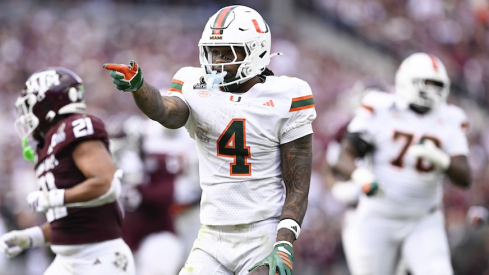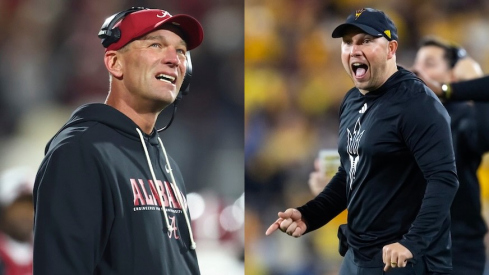When you're writing about the past, one of the most important tools you can carry with you is context. Last week, I wrote an article about the late, great Don Unverferth which claimed that he was a terrible quarterback in the 1960s because of how he supposedly measures up statistically to the likes of quarterbacks today. While that hyperbole was really just to reinforce the incredible person he was as a doctor, we received numerous messages from his friends and family who pointed out that I wasn't being fair to Don Unverferth the athlete.
And they were right! I had failed to consider how immensely the position of quarterback has changed in the last 50 years, and that Don was an able conductor of a Woody Hayes offense that got better every year that he was under center.
But statistics can't really give the full measure of a player, which is why we're really lucky to be able to present to you the perspective of former Columbus mayor Greg Lashutka, who for years played tight end at Ohio State and was one of Don's primary passing targets.
Johnny,
Your recent article on my friend and teammate Don Unverferth appropriately recognized him as a man and physician of great qualities. However, you widely missed the mark on him as a great athlete as well. Calling him the “worst multi-year quarterback in Ohio State history” is flat wrong. You compound that inaccuracy further stating he "was almost indescribably bad at passing the football." Finally, you call him a "screamingly bad quarterback." The hyperbole and joking references in your article falls short in properly portraying Don Unverferth the athlete.
As a teammate of Don’s and co-captain of the 1965 OSU Football team with Ike Kelley, I hope to correct your most inaccurate impression of Don and his athletic record.
Don was a very gifted student athlete in football and basketball, widely recruited before graduating from Dayton Chaminade High School in Dayton, Ohio in 1962. He had an Adonis physique, great athletic skills, keen mind, possessed innate leadership qualities expected of a major college quarterback, and capped off with a rocket throwing arm. Don could have been a student athlete at many other schools but chose the Ohio State University because he could pursue pre-medicine academics and play football at the highest level.
It is important to note that Coach Woody Hayes had a deep conviction that if a football team threw the football, three things could happen and two of them were bad- incompletion or interception. In Woody’s mind that meant if you controlled the ball with the running game the odds of winning were quite high. Our era emphasized the importance of running the football with powerful fullbacks and deft halfbacks. Not passing the football.
Our lineman were old school tough. We traditionally had a superb defense. We were a prototypical Woody Hayes football team. Even with a gifted throwing arm, Don accepted Woody’s coaching philosophy, knowing that running the football would lead our offense, not passing.
Woody’s football philosophy held us in very good stead. Although our class never won a Big Ten title, we were second each year against very good opponents- Illinois in 1963, Michigan in 1964, and Michigan State in 1965. Our three year record was the best in the Big Ten.
And at the heart of our team was our superb quarterback, Don Unverferth.
In 1963 (5-3-1) we had a rebuilding year. Our final game of the year, as usual ,was against Michigan in Ann Arbor. It was a most unusual game since it was delayed a week due to the tragic assassination of President John F. Kennedy. We beat a very good Michigan team largely on the passing success between Don and Paul Warfield as his prime receiver. Don’s arm made the difference.
In 1964 (7-2) we were challenging for a national championship with key wins over USC and Illinois with Don’s accurate throwing complementing our running game as a key part of our victories. Again, Don’s passing made a difference.
In 1965 we again ended with a 7-2 overall record with Don’s passing balancing our bread and butter running based offense. One more time, Don’s passing made a difference.
A quarterback is the key to the offensive eleven on any football team. However, it is not always the passing or running statistics that tell the whole story. All eleven football players contribute because football is the ultimate team sport. Let me assure you that our overall success had at our core a gifted leader and athlete in our quarterback Don Unverferth which raw statistics do not paint the complete picture. Don was invited to pursue professional football but chose to forego that option and pursue his life desire of practicing medicine as the next chapter in his life.
As an aside, in no small part I owe my life to Don. Don’s medical research paved the way not only for open surgery but also angioplasty as an option for use on heart patients that twice was used on me performed by Dr. Charlie Bush at the Ohio State University Medical Center. I am most grateful to have been Don’s teammate and beneficiary of a great student athlete whose medical research keeps "paying forward" as Woody and Ralph Waldo Emerson have been quoted.
I hope you may now have a better appreciation of Don Unverferth the athlete. He deserves your respect in that part of his life as well as being a fine man and physician.
Thanks again to Greg, Don's brother Jack, and everyone else who wrote in to Eleven Warriors to talk about Don Unverferth. It's really important to me that I'm able to get these kinds of things right, and as Greg writes, I certainly have a better understanding of Don the athlete. We all hope that you do, too.
And hey! Don't forget that you can donate to the Unverferth House, which provides housing for the families of patients at the Ohio State Medical Center!


